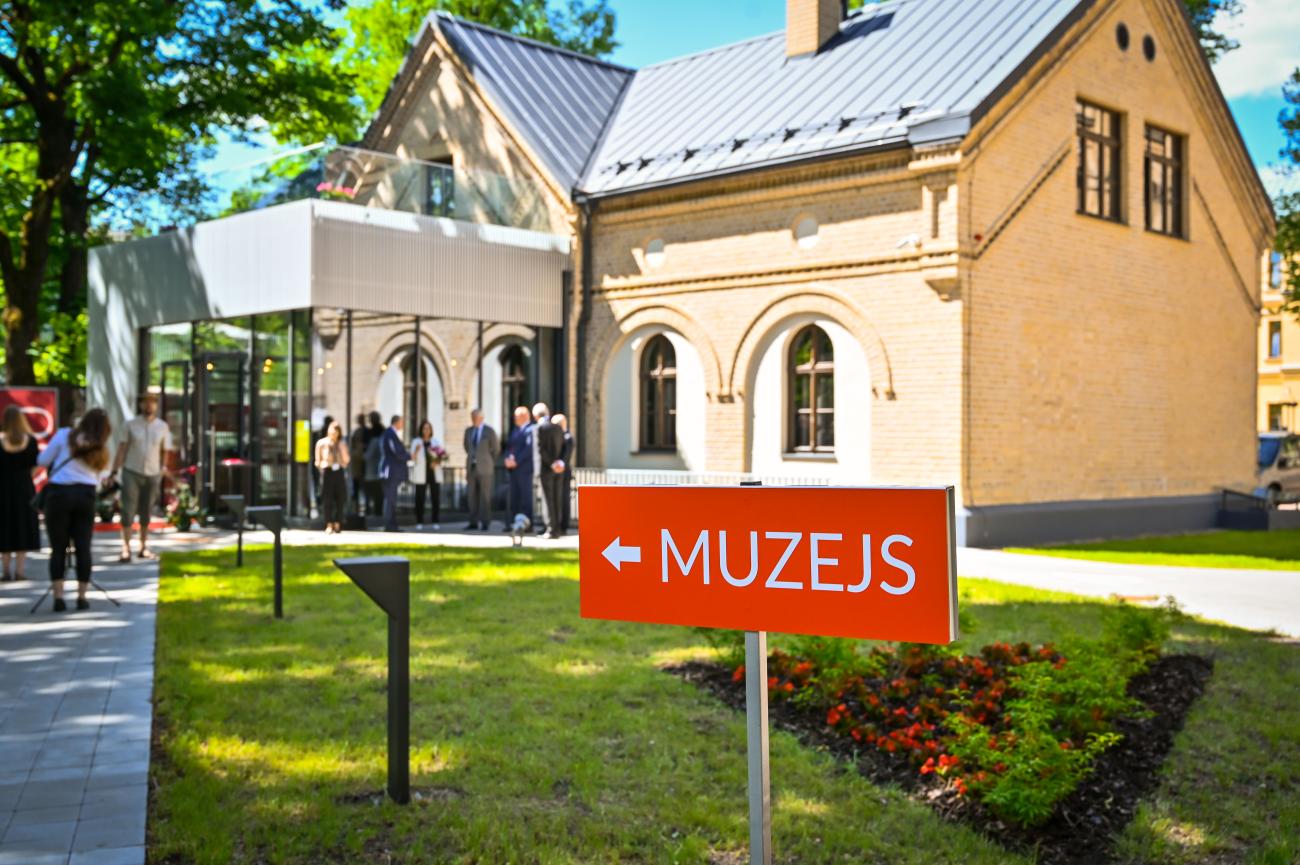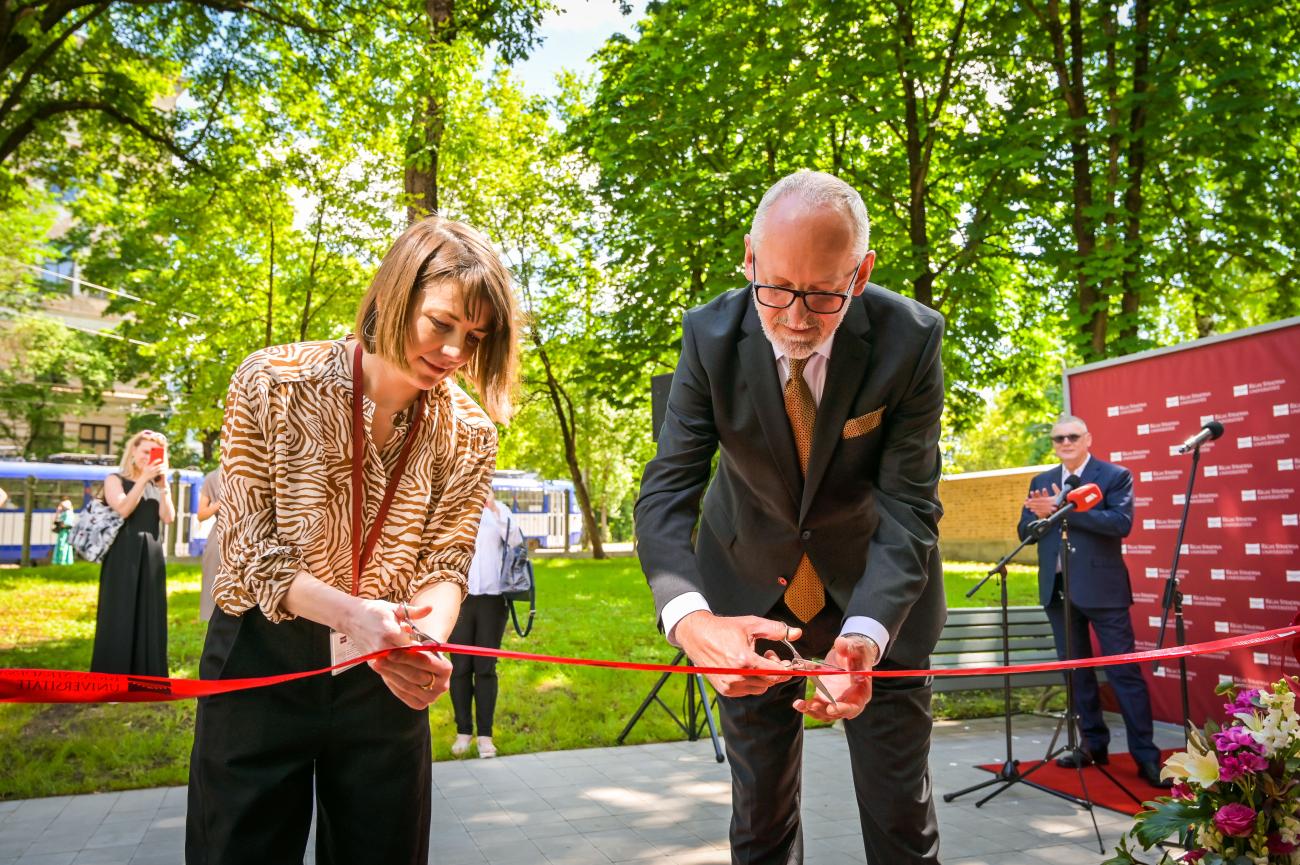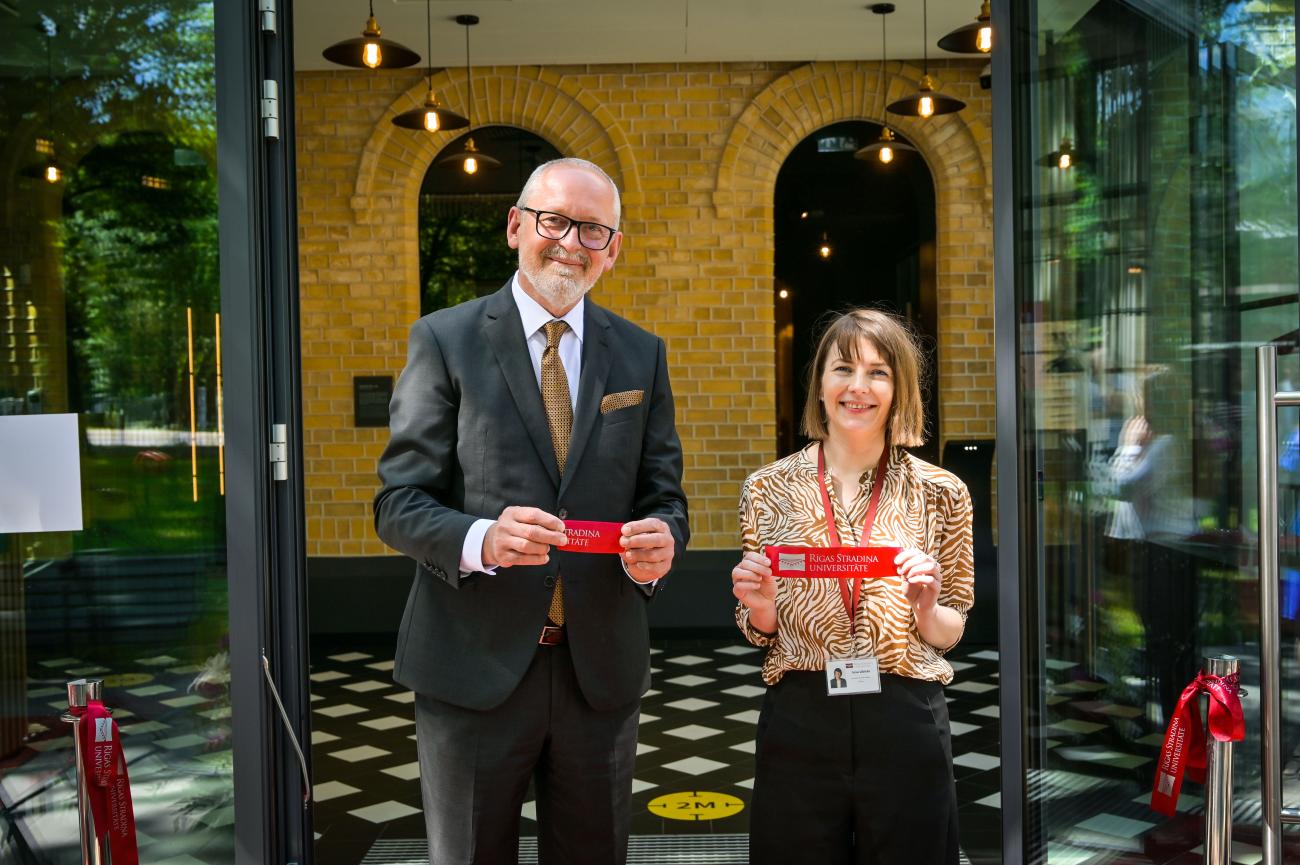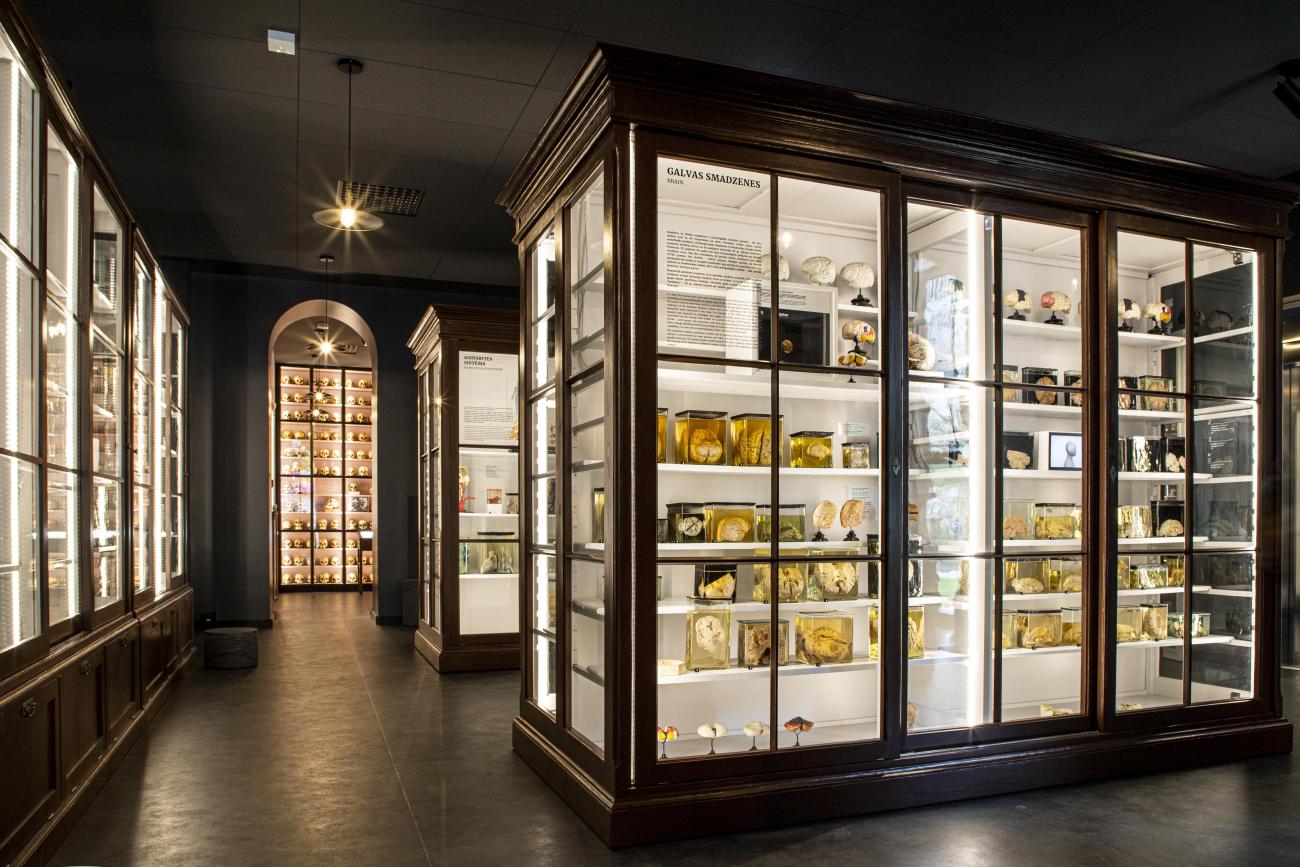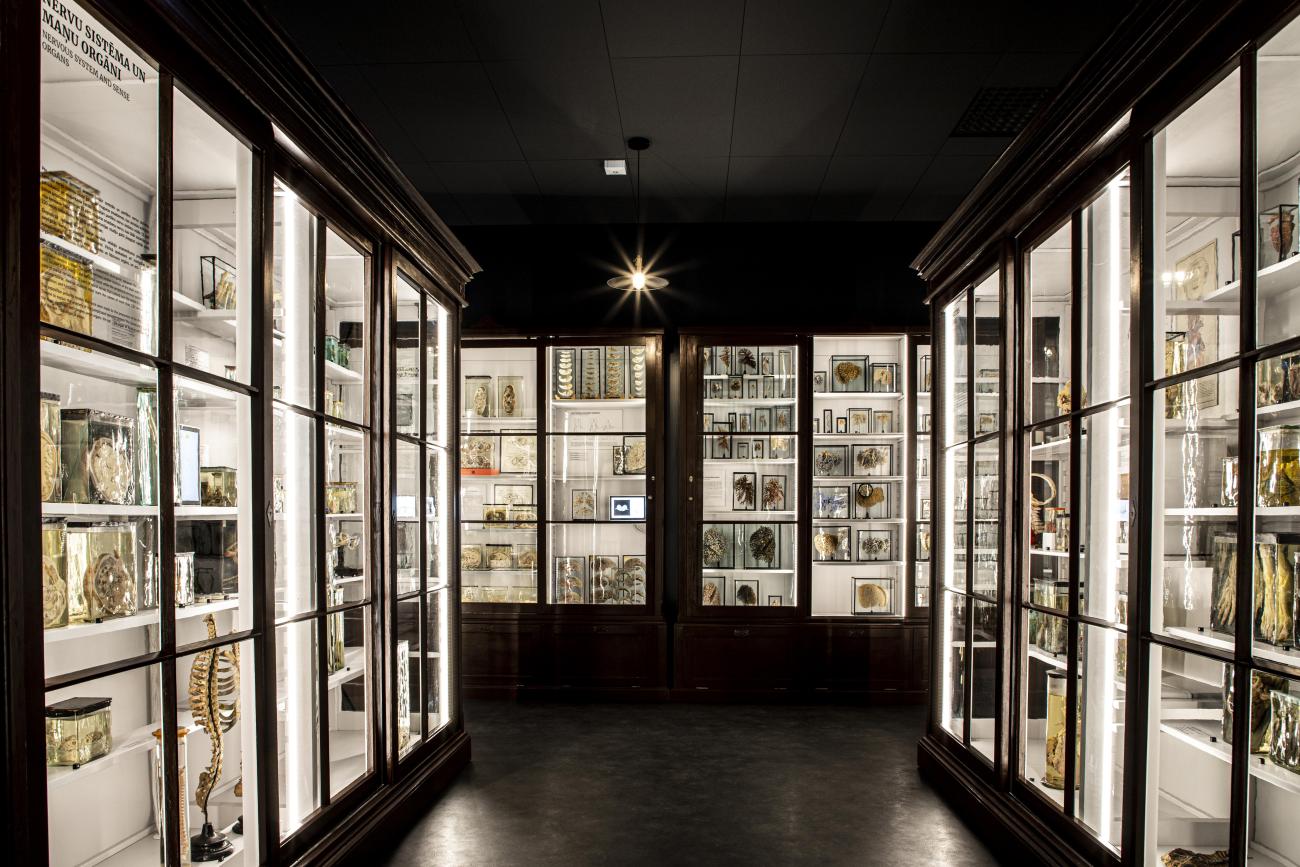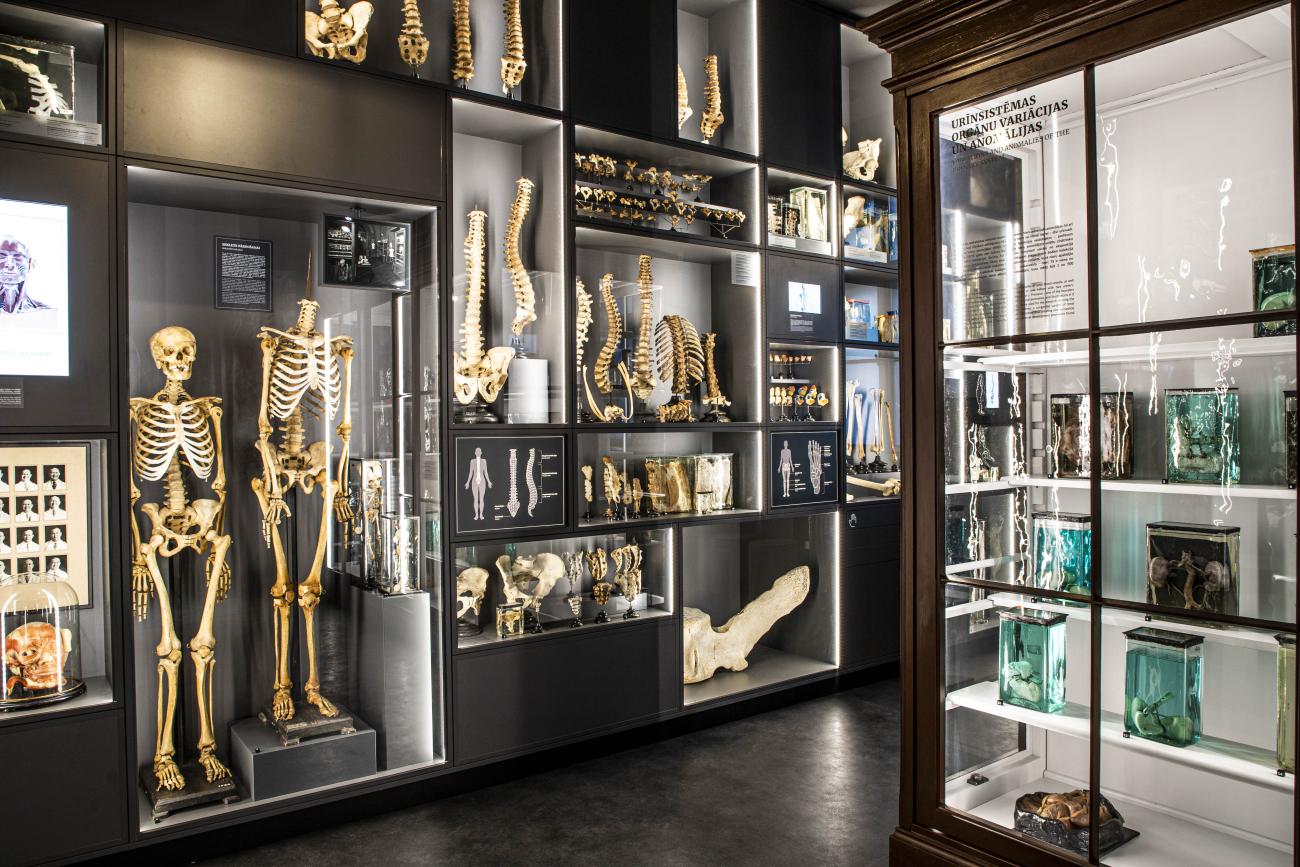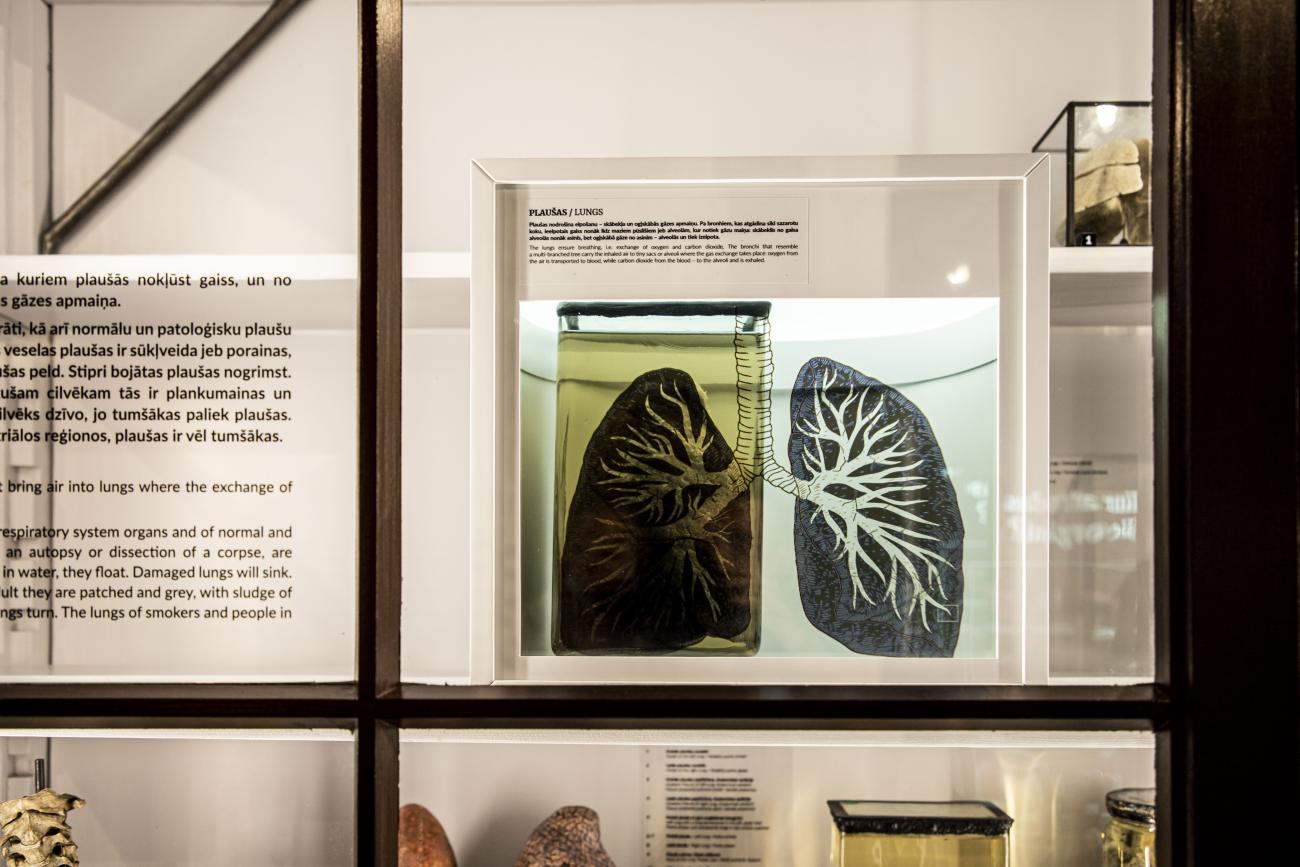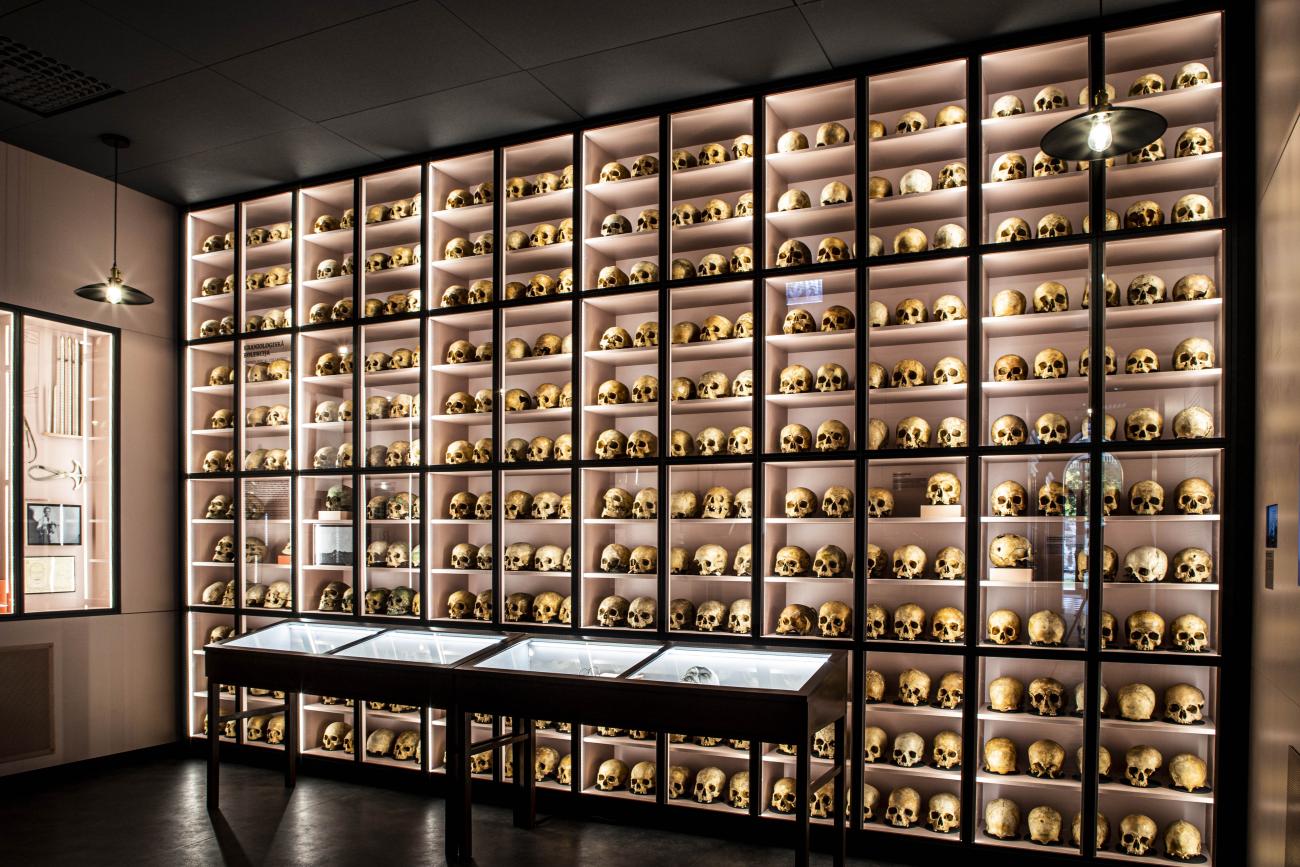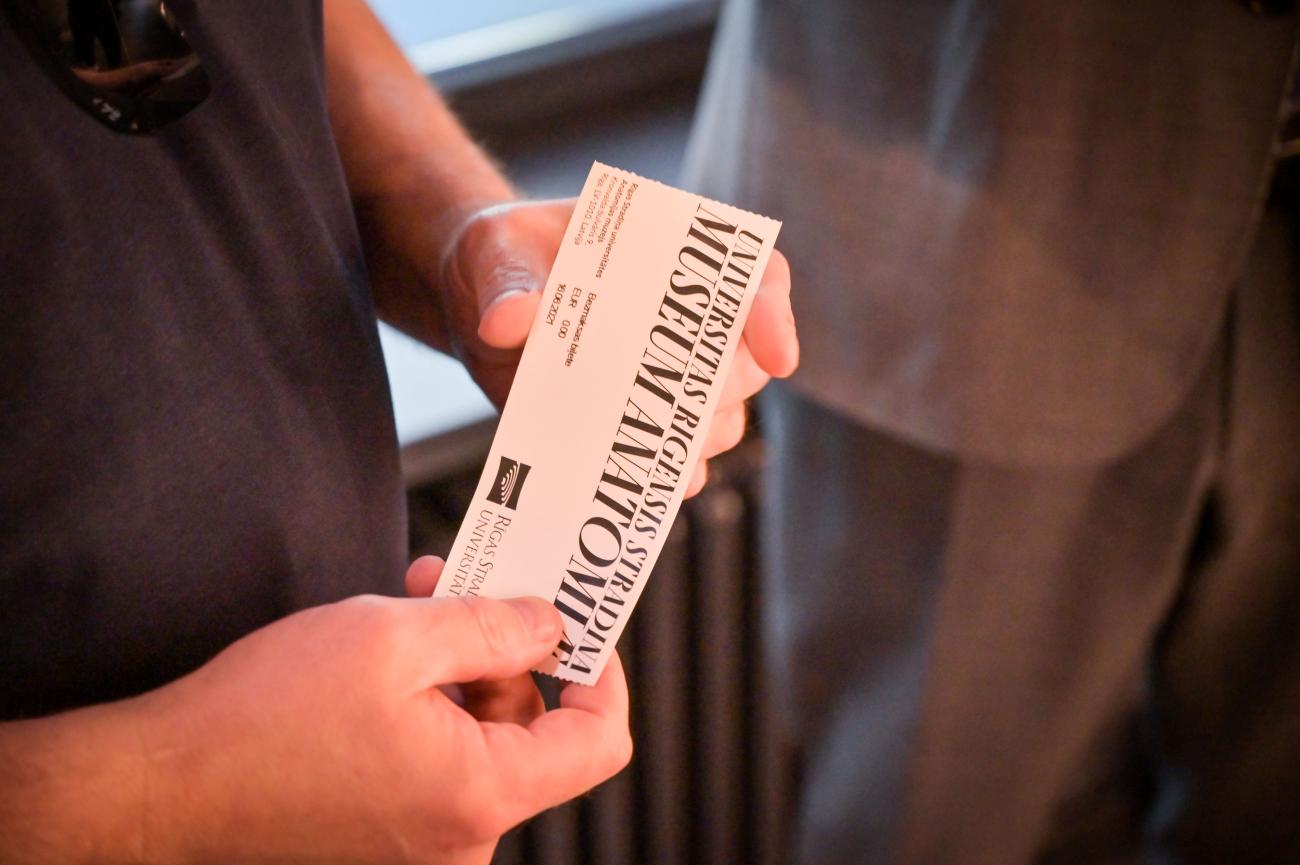The New RSU Anatomy Museum is Now Fully Open!
On 16 June, the Rīga Stradiņš University (RSU) Anatomy Museum opened its doors to inhabitants and guests to Riga. Located on 9 Kronvalda bulvāris, the new museum is an educational, unusual cultural space with a historical collection and modern touch. The museum is based on the first anatomy studies collection in Latvia, which was created in the Anatomicum in the 1920s and 1930s to educate prospective doctors. The new museum opens its exhibition to everyone and thus offers visitors the opportunity to learn about how diverse bodies are and see that which is usually seen only by anatomists or surgeons.
The museum's collection includes several thousand anatomical preparations – organs, body parts and even whole bodies. Thanks to skilled anatomical work, these have remained unchanged for 100 years and have become a part of the medical history legacy included in the National Museum Collection. Now the historical collection has been given a second wind – a renovated building, a contemporary interpretation and a modern digital framework that allows all visitors to explore the human body in detail.
‘RSU is the leading health care and medical university in our country and a flagship for international students in the Baltic States. The university's long-term development strategy includes modernising the study infrastructure and introducing the latest information technologies into the study process. The new RSU Anatomy Museum is an important long-term contribution to the development of medical education and science in Latvia,’ emphasises RSU Rector, Prof. Aigars Pētersons, adding that ‘today we are witnessing a historic event. We are opening a new museum that will be unique in Riga, Latvia and in Northern Europe.’
Asst. Prof. Ieva Lībiete, the Head of the Anatomy Museum, points out that while this collection is not exactly unique, it is unusual. Collections like this were created at every medical faculty around the world. ‘We belong to those university museums that believes that historical anatomical collections can only be properly valued by acknowledging their existence through studying, using and exhibiting them. This creates a discussion about the identity of the anatomical materials, their place in the cultural environment and their scientific application in a historical and contemporary context,’ emphasises Lībiete. She is also one of the exhibition’s curators together with social anthropologist Ilze Sirmā.
The project was implemented by DD Studio, a company that is experienced in working with museums, under the supervision of its Creative Director, artist Jānis Mitrēvics. The contents of the exhibition's interactive and digital solutions were created in collaboration with the medical education start-up company Anatomy Next. The museum’s brand was created by SIA Kolektīvs (Ltd.)
In order to plan your visit safely, please register in advance via the Bookla app. During your visit, the RSU Museum app will help you to get acquainted with the museum. Children under the age of 14 must be accompanied by an adult, who are in turn invited to assess whether the museum’s exhibits would distress the child. Photography and filming the collection of congenital anomalies is not permitted. The Anatomy Museum is a part of the RSU Institute of the History of Medicine and also serves as a place for studies and research for RSU students and pupils from Latvian schools.
The museum was created over five years and is housed in a historic 19th-century stable building next to the Anatomicum. Architect Arvīds Līkops is the project’s designer, and it was developed by SIA Delta Construction (Ltd) and the architecture company Nams. The reconstruction work and adapting the building to the museum’s needs was carried out by SIA Velve (Ltd.), whereas SIA Celtniecības Kvalitātes aģentūra (Ltd.) was assigned as construction supervisor. The reconstruction of the relatively small building proved to be quite a complicated project, as the new basement had to be dug from the inside the building. The museum also had its roof rebuilt and two new annexes have been created. The building meets all modern accessibility requirements – there is elevator that which connects all floors. Historically, the total area of the building was 408.7 square metres, and after the reconstruction it has been expanded to 651.5 square metres. The cost of creating the museum in the amount of EUR 2.7m was covered by the RSU's own funding.
The RSU Anatomy Museum website
The Anatomy Museum on social media
Related news
 RSU and RSU LASE gain valuable insights from Northern European sports universities for the development of new study programmesFor Students, Consolidation, For RSU Employees, Internal consolidation, Development, International Cooperation
RSU and RSU LASE gain valuable insights from Northern European sports universities for the development of new study programmesFor Students, Consolidation, For RSU Employees, Internal consolidation, Development, International Cooperation
